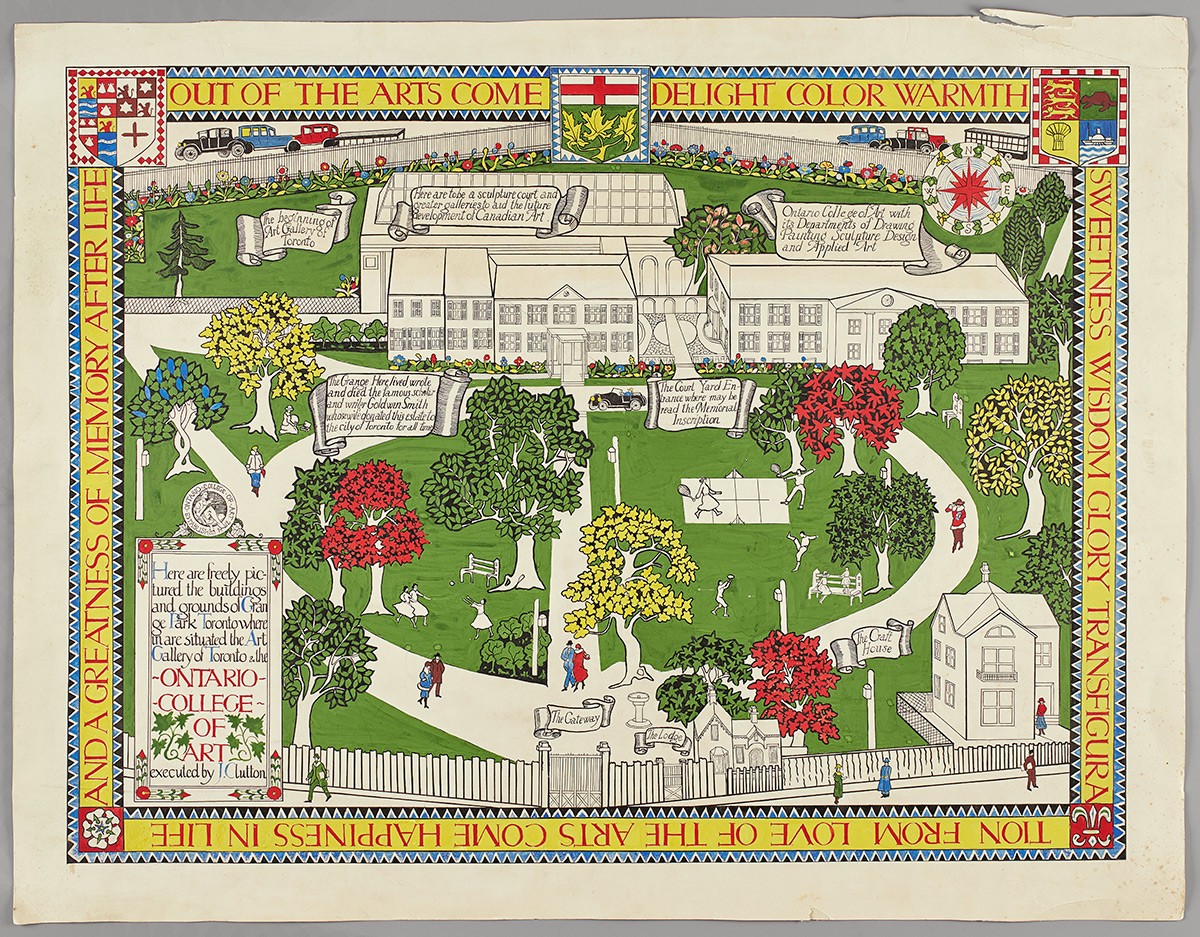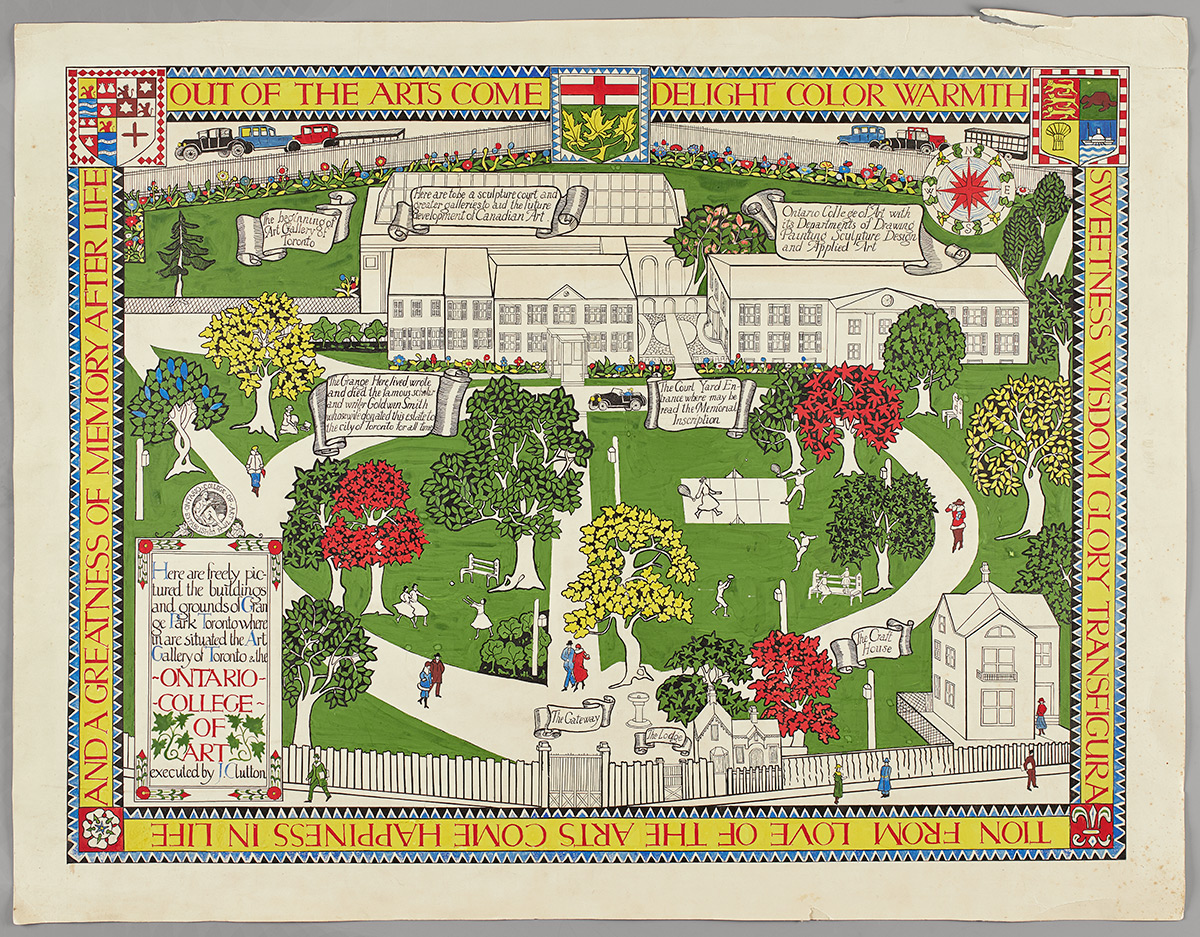#RetroAGO: Our story of perseverance
Out of the arts comes delight, colour, and warmth.
Jose Clutton. Out of the Arts Come Delight Color Warmth..., 1920s.Opaque watercolour, black ink, graphite on paper, 51.7 × 67.5 cm. E.P. Taylor Library and Archives. Gift of Dr. Ronald and Carroll Willer, London, Ontario, 2018. LA.155944
By: Marilyn Nazar, AGO Archivist
We are living in unprecedented times, facing challenges we could not have imagined a month ago. As the AGO’s archivist for the better part of the last decade, I’ve had the pleasure and privilege of preserving and interpreting the Gallery’s historical records. Before this new reality set in, I had the opportunity to share highlights of the AGO’s history with a group of my colleagues. It already seems like a distant memory.
Working from home in Hamilton, Ontario, I find myself struggling to think of a time when we’ve faced similar challenges. In the past, the AGO has experienced uncertainty, and has seen through some dark times. But as we round the corner to the AGO’s 120th birthday, my thoughts settle on our development as a fledgling institution over a century ago.
The first galleries were constructed against the backdrop of the First World War and the global outbreak of the Spanish Flu pandemic, followed by a minor and then a major economic depression. Plans for expansion were first drawn up as early as 1912, a year before the Art Museum of Toronto (now the AGO) was established in the Grange House. But it would take another two decades and three different construction periods for these plans to come to fruition.
Given the onset of the War and the initial extravagant plans for the Gallery developed by architects Darling & Pearson in 1914, construction was put on hold until the fall of 1916. It took more than a year to complete the first three galleries, a much scaled-down version of what was first envisioned.
Though construction was not quite complete, the galleries opened in April of 1918, just as the first wave of Spanish Flu hit. In the fall of 1918 when the second wave of the pandemic occurred, the Museum closed amid a citywide shutdown of public spaces and gatherings. Exhibitions did not open that fall until November 9. The construction was finally complete in April of 1919.
It would take another six years to raise the capital to build Walker Court and the adjacent galleries, even then a scaled-down version of the 1914 vision. It would take another decade to complete the final two galleries, which opened in the middle of the Great Depression in November 1935.
While those early plans for the Gallery were never completed as initially imagined in the watercolours of S.H. Maw, it is due to the enduring vision and commitment of artists and art lovers such as George Reid and Sir Edmund Walker and those who followed that we’ve come this far.
As I write this, the words surrounding Jose Clutton’s piece (above) of Grange Park circa the 1920s remind me how we will continue to persevere in our love of art, no matter where that takes us.


